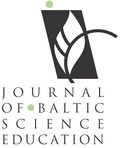STUDENTS’ CONCEPT ORGANISATION REGARDING CHEMICAL EQUILIBRIUM IN UPPER-SECONDARY EDUCATION: BASED ON REACTION TIME TECHNIQUE
| Title | STUDENTS’ CONCEPT ORGANISATION REGARDING CHEMICAL EQUILIBRIUM IN UPPER-SECONDARY EDUCATION: BASED ON REACTION TIME TECHNIQUE |
| Publication Type | Journal Article |
| Year of Publication | 2021 |
| Authors | Mai, Y, Qian, Y, Lan, H, Li, L |
| Journal | Journal of Baltic Science Education |
| Volume | 20 |
| Issue | 3 |
| Start Page | 443-455 |
| Pagination | Continuous |
| Date Published | June/2021 |
| Type of Article | Original article |
| ISSN | 1648-3898 |
| Other Numbers | E-ISSN 2538-7138 |
| Keywords | category judgment task, chemical equilibrium, organisation of concepts, reaction time |
| Abstract | Chemical equilibrium is so important domain knowledge in chemistry that the corresponding organisation of concepts in students has been an interesting but unsolved issue. A deeper understanding of how students organise the relevant concepts in long-term memory is beneficial to develop more targeted teaching practices. This research utilized the reaction time technique as a new approach to exploring upper-secondary school students’ organisation of concepts regarding chemical equilibrium. A category judgment task involving 247 Chinese twelfth-grade students from two upper-secondary schools was conducted. The results showed that a significant difference was between the reaction time of concept dimensions. The mean reaction time of the dimension ‘reversible reaction’ was the shortest, but the dimension ‘representation of state’ had the longest mean reaction time. Next, there was no significant difference in the organisation of concepts between students studying chemistry at different levels of academic achievement. These findings provide a new and essential picture to deeply understand the organisation of concepts regarding chemical equilibrium and help focus on the relations between some relevant concepts. This research represents that the reaction time technique can be utilized in the research on organisation of science concepts. |
| URL | http://oaji.net/articles/2021/987-1622791231.pdf |
| DOI | 10.33225/jbse/21.20.443 |
| Refereed Designation | Refereed |
| Full Text |
